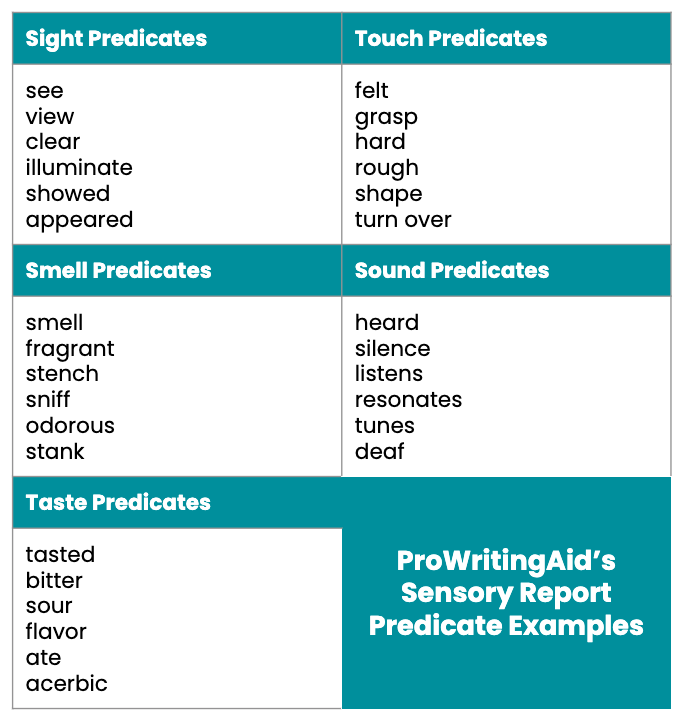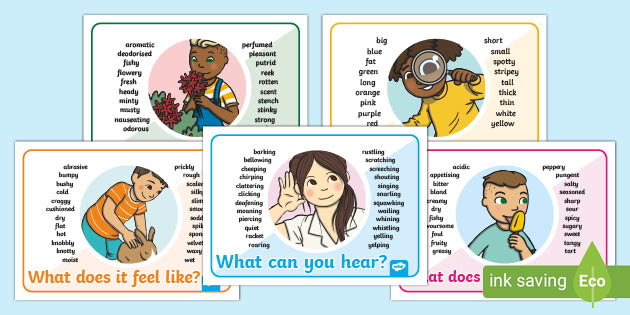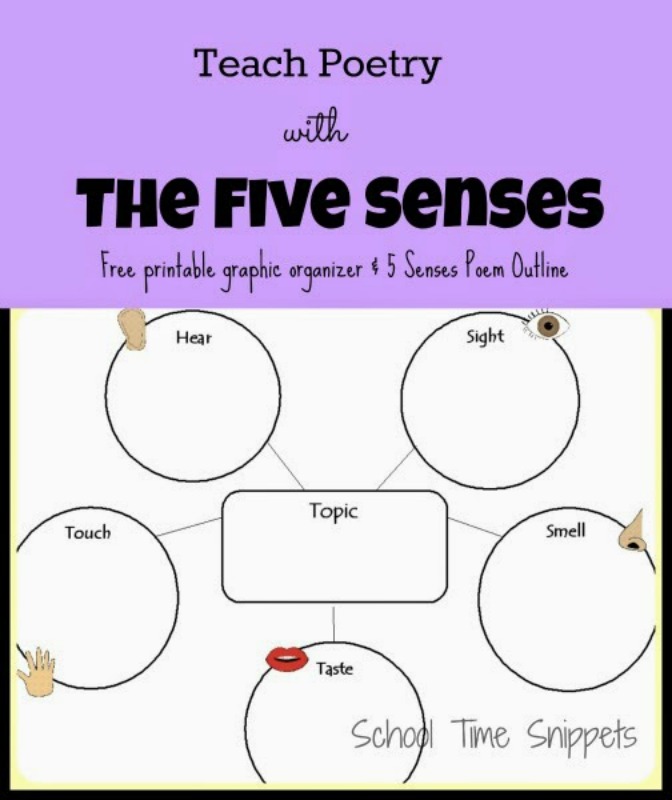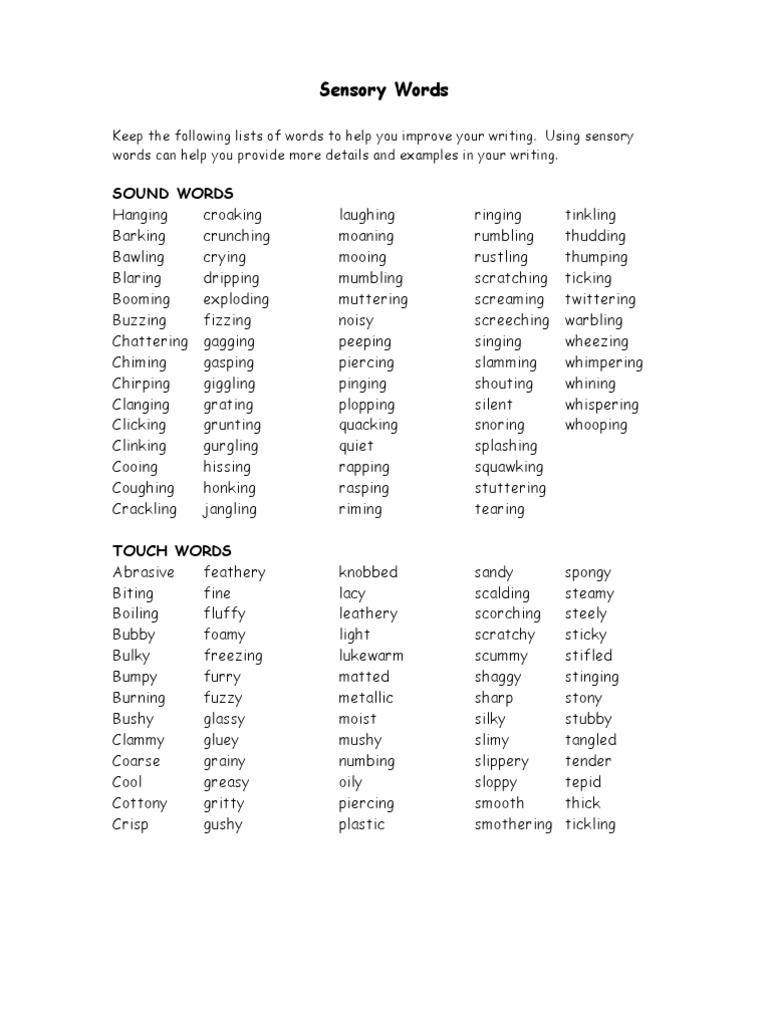The five senses are sight, hearing, taste, smell, and touch. These senses allow us to experience the world around us and perceive the vast array of stimuli that exist in our environment. In this essay, we will explore a variety of descriptive words related to each of these senses.
Sight:
- Bright: Something that is bright is very easy to see, often because it is producing or reflecting a lot of light.
- Vibrant: Something that is vibrant is full of energy and life, often because it is very colorful or has a lot of movement.
- Clear: Something that is clear is easy to see through or understand.
- Fuzzy: Something that is fuzzy is not clear or distinct, often because it is out of focus or there is a lot of interference.
- Glowing: Something that is glowing is producing or reflecting light, often in a soft or warm way.
Hearing:
- Loud: Something that is loud is producing a lot of sound, often in a way that is difficult to ignore.
- Soft: Something that is soft is producing a low level of sound, often in a way that is pleasant or soothing.
- Echoing: Something that is echoing is producing a sound that is reflected off of a surface, often creating a repeating or reverberating effect.
- Whispering: Something that is whispering is producing a very low level of sound, often in a way that is quiet or secretive.
- Melodic: Something that is melodic is producing a pleasant or harmonious series of sounds, often in a way that is musical.
Taste:
- Sweet: Something that is sweet has a pleasant, sugary taste.
- Sour: Something that is sour has a sharp, tangy taste.
- Bitter: Something that is bitter has a harsh, unpleasant taste.
- Salty: Something that is salty has a strong, salty taste.
- Savory: Something that is savory has a rich, complex flavor, often with a slightly salty or umami taste.
Smell:
- Fragrant: Something that is fragrant has a pleasant smell, often because it contains essential oils or other aromatic compounds.
- Pungent: Something that is pungent has a strong, sharp smell, often in a way that is unpleasant or overpowering.
- Musty: Something that is musty has a damp, moldy smell, often because it has been stored in a humid or poorly ventilated place.
- Floral: Something that is floral has a smell that is reminiscent of flowers, often because it contains essential oils or other aromatic compounds from plants.
- Aromatic: Something that is aromatic has a pleasant smell, often because it contains essential oils or other aromatic compounds.
Touch:
- Smooth: Something that is smooth has a surface that is even and free of bumps or roughness.
- Soft: Something that is soft is pleasant to touch because it has a smooth, velvety texture.
- Rough: Something that is rough has a surface that is uneven and has a lot of bumps or abrasions.
- Hard: Something that is hard is difficult to bend or deform because it is solid and dense.
- Cold: Something that is cold has a low temperature and feels cool to the touch.
In conclusion, the five senses allow us to experience and describe the world around us in a rich and varied way. By using descriptive words related to sight, hearing, taste, smell, and touch, we can create detailed and evocative descriptions of the stimuli that we encounter.
Adjectives for the five senses worksheet

Let children take turns closing their eyes and feeling an item. Gloomy dazzling bright foggy gigantic. Try these four steps to help them understand how to come up with strong sensory details. C: Stop reading it entirely. What new technology has developed, and how does it contribute to our well-being, comfort, or convenience? For instance, you can create all the good feels of rain by describing it as follows.
How to Use the Five Senses in Descriptive Writing

. Whenever we ask children to describe a place or a thing using their five senses we are usually met with silence and blank stares. Describe what it looks like. Describe your favorite season, including the activities that make it so appealing to you. Here are some ideas you can use: Descriptive Writing Prompts for Elementary Schoolers Do you have a younger student? Which familiar items are missing? Because we have words, we can actually describe the sound—or lack thereof—through similes, such as, Her usually musical voice betrayed hoarseness that told him she had either smoked a whole pack of cigarettes or indulged in a screaming competition.

Here are a few simple prompts for them to practice. Where did you go? Sitting on a dock by the water? Is it in your bedroom? Taste touch sight smell and sound. Use Descriptive Language in Writing. Colorblind astigmatism black and white bright brightness colored contacts dazzling nearsighted the binoculars the blind person the braille the color the contact lenses the contacts the cornea the dark the darkness the eye exam the eyes color the eyes the glasses the guide dog the light the look the magnifying glass the microscope. Sense of Sound Sound is one of the rare things that never stop, for even an absence of silence can be deafening in some cases. Descriptive Writing Prompts for Middle Schoolers Choose from these engaging prompts to get your middle school student excited to write! Under a certain tree at the park? Teach your students or review how to Once your students are done finding new words in the thesaurus, have them compare their list with the one they made at the very beginning Step 1. Using the 5 Senses Using the five senses is one of the best ways to incorporate descriptive writing.

They might almost be able to taste and smell the mint ice cream or feel an excruciating brain freeze. The most often used sense when writing is sight. It likely involved some strange or silly things. Then, make a list together of specific words to describe it. Sensory words are descriptive they describe how we experience the world.

However, you could also use this sense in the place of smell. B: Start daydreaming as you read. Words such as fluffy tinkling jagged sparkly leathery chocolaty or spicy tell so much more about each object dont they. The faint taste of salt on the breeze taste. You could compare their experience or describe it with words like salty, sweet, savory, and other adjectives. Descriptive Words for Hearing loud sounds Descriptive Words for Hearing soft sounds Descriptive Words for Smell. Therefore, restrict your setting to only a few exquisitely described details, and let your readers fill in the rest with their imagination.

Describe your town or city, especially the sights and scenery it offers to curious visitors. As soon as he entered the blazing structure, the invisible hands of smoke threatened to choke him to death. Sight words - level 1 795. The sparkling water bubbled as a creature from below made its way to the surface Same goes with using heard felt smelled and tasted Omit those words and describe those senses so people. Then, try to capture this amazing person on paper. Not only does this help the reader become more engaged with the text, but it also increases their comprehension.

Something that feels slightly wet to the touch is damp or moist. She loved the smell of soil after a fresh spell of rain. The slippery rocks touch. Adjectives are describing words. Sense of Smell The sense of smell is extremely powerful, for it can evoke sensations and memories like nothing else. Describe a family vacation or outing that was especially memorable for you. These Adjectives for 5 Senses Digital Task cards will give your students practice with adjectives focusing on words that describe the 5 sensesThere are 18 digital task cards with a sentence and picture for students to practice choosing the adjective in the sentenceDrag Drop design allows students to easily complete the task on their own.








